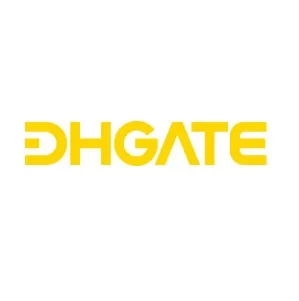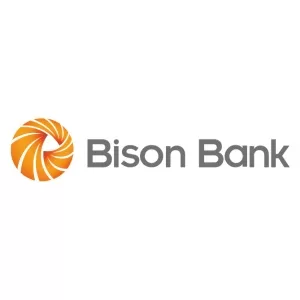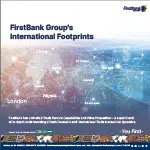Finance
Middle Market Companies Boosted U.S. Economic Health in Recent Years, According to New Research from American Express and Dun & Bradstreet

The Latest Installment of the Middle Market Power Index Series Finds That Mid-Sized Firms Are Responsible For More than Half (51.7%) of Total U.S. Job Growth since 2011
The latest report finds that middle market firms substantially improved the nation’s economic health between 2011 and 2017. While middle market companies account for less than 1% of all commercially-active firms, they experienced the greatest growth in overall numbers (83.9%), employment (103.3%) and revenue (99.9%) since 2011.
Currently, middle market firms employ more than one in four U.S. workers (27.2%) and are responsible for much of the job growth in recent years. Of the 51.8 million new jobs that were created since 2011, 26.8 million (or 51.7%) were created by middle market firms. Middle market firms also lead the way in revenue growth and account for more than one quarter (26.8%) of all revenue produced by U.S. businesses, equating to roughly $9.3 trillion.
“Although small in number, middle market companies pack a large economic punch,” said Brendan Walsh, Executive Vice President, American Express Global Commercial Payments. “What our Middle Market Power Index shows us is that economic growth does not always come from the most expected places. It’s not just the small startups and large multinational companies that are hiring the most people and leading the way in revenue growth, it is also mid-sized manufacturers and wholesalers in the heartland, which are becoming leaner and more globally competitive. Growth in these sectors, among other middle market industries, is what is really moving the needle for the American economy.”
“Middle market firms are responsible for much of the economic growth we have experienced over the past several years,” said Nalanda Matia, lead economist at Dun & Bradstreet. “These companies are clearly growth-oriented and are indicative of where the economy may outperform in the years ahead.”
Middle Market Firms Choose Middle America
Commercially-active U.S. middle market companies can be found throughout the country, and there are seven states that have the greatest concentration:
- Illinois (1.55%)
- Wisconsin (1.53%)
- Michigan (1.36%)
- Ohio (1.29%)
- North Dakota (1.28%)
- New Jersey (1.28%)
- Kansas (1.26%)
In addition to these states, high concentrations of middle market companies are also found in Washington, D.C. (2.13%) and territories including Puerto Rico (5.32%) and the U.S. Virgin Islands (2.94%). On the flip side, Montana (0.62%), Colorado (0.61%) and Florida (0.48%) are among the states with the lowest concentration of middle market enterprises.
Overall, the total number of middle market firms soared 83.9% over the past six years, signaling vitality and agility in this segment. During that time, three states more than doubled their number of middle market companies:
- Texas (+104.1%)
- Ohio (+102.2%)
- Michigan (+100.5%)
Manufacturing and Wholesale Trade Are Leading Sectors
Combined, the manufacturing and wholesale trade industries account for one-third of all middle market companies, and middle market firms in both industries experienced growth of at least 120% between 2011 and 2017. In general, manufacturers and wholesalers are more likely to belong to the middle market segment of the economy compared to businesses in general; 17.6% of middle market firms are in the manufacturing sector compared to 3.2% of all firms, and 16.6% of wholesalers are middle market firms compared to 3.6% of all companies.
Of the ten states with the largest number of middle market manufacturers, Michigan and Ohio stand out for their growth in numbers between 2011 and 2017: 159.1% and 152.7%, respectively. Areas with the lowest rate of growth in the number of middle market manufacturers between 2011 and 2017 include the U.S. Virgin Islands (0.0%), Alaska (15.4%), Puerto Rico (29.1%), Washington DC (64.7%) and Nebraska (82.6%).
Exporting Demonstrates an Important Opportunity for the Middle Market
International trade is increasing among middle market companies. While only 6.9% of middle market firms currently export, this number has been on the rise over the past six years. Since 2011, the number of middle market enterprises that export their goods and services has quadrupled.
Of the larger states, North Carolina had the highest overall growth rate in the number of middle market firms that export their goods or services: 540.7%. Other states and territories with exceptionally high growth rates in middle market exporting include:
- The U.S. Virgin Islands 900.0%
- Delaware 833.3%
- Idaho 766.7%
- Hawaii 633.3%
- Vermont 633.3%
Areas with the lowest rates of growth in the number of middle market firms that export are Washington DC (0.0%), Montana (57.1%), South Dakota (83.3%), Puerto Rico (112.1%) and Oklahoma (195.8%).
Women- and Minority-Owned Businesses on the Rise
The makeup of middle market firms has evolved over the past six years, with women- and minority-owned firms showing significant growth. The number of women-owned middle market firms skyrocketed 119.6% from 2011-2017, and women increased their share of all middle market enterprises by 1.2 percentage points during that time, from 6.0% to 7.2%.
While minority-owned firms make up just 5.5% of all middle market enterprises, the number of minority-owned firms jumped 85.8% since 2011. Middle market firms are 2.5 times more likely to be minority-owned as compared to all commercially active companies. Importantly, firms knocking on the door of the middle market − those generating at least $1 million in revenue − are more likely to be minority-owned businesses (5.9%).
Study Methodology
This report is based on an analysis of all of the US firms in Dun & Bradstreet’s (D&B’s) commercial databases between March 2011 and March 2017. The first database is a virtual census of all of the commercially active businesses in the United States (defined as firms that have obtained a D-U-N-S® Number and that sell and receive goods and services and use credit transactions in their business).The second is D&B’s credit scoring archive database, which collects and models commercial activity and business financial strength. All subsidiary and business establishment data are combined; only enterprise-level data (top of the business family tree, or Ultimate D-U-N-S Number firms) are reported. Additionally, public sector entities are excluded.
About American Express
American Express is a global services company, providing customers with access to products, insights and experiences that enrich lives and build business success. Learn more at americanexpress.com and connect with us on facebook.com/americanexpress, instagram.com/americanexpress, linkedin.com/company/american-express, twitter.com/americanexpress, and youtube.com/americanexpress.
Key links to products, services and corporate responsibility information: charge and credit cards, business credit cards, Plenti rewards program, travel services, gift cards, prepaid cards, merchant services, Accertify, corporate card, business travel, and corporate responsibility.
About American Express Global Commercial Payments
Through its Global Commercial Payments division, American Express offers a suite of payment and lending products that help businesses and organizations of all sizes gain financial savings, control and efficiency. Global Commercial Payments provides solutions for travel and everyday business spending, cross border payments, global currency solutions, and business financing.
About Dun & Bradstreet
Dun & Bradstreet (NYSE: DNB) grows the most valuable relationships in business. By uncovering truth and meaning from data, we connect our customers with the prospects, suppliers, clients and partners that matter most, and have since 1841. Nearly ninety percent of the Fortune 500, and companies of every size around the world, rely on our data, insights and analytics. For more about Dun & Bradstreet, visit DNB.com.



















































